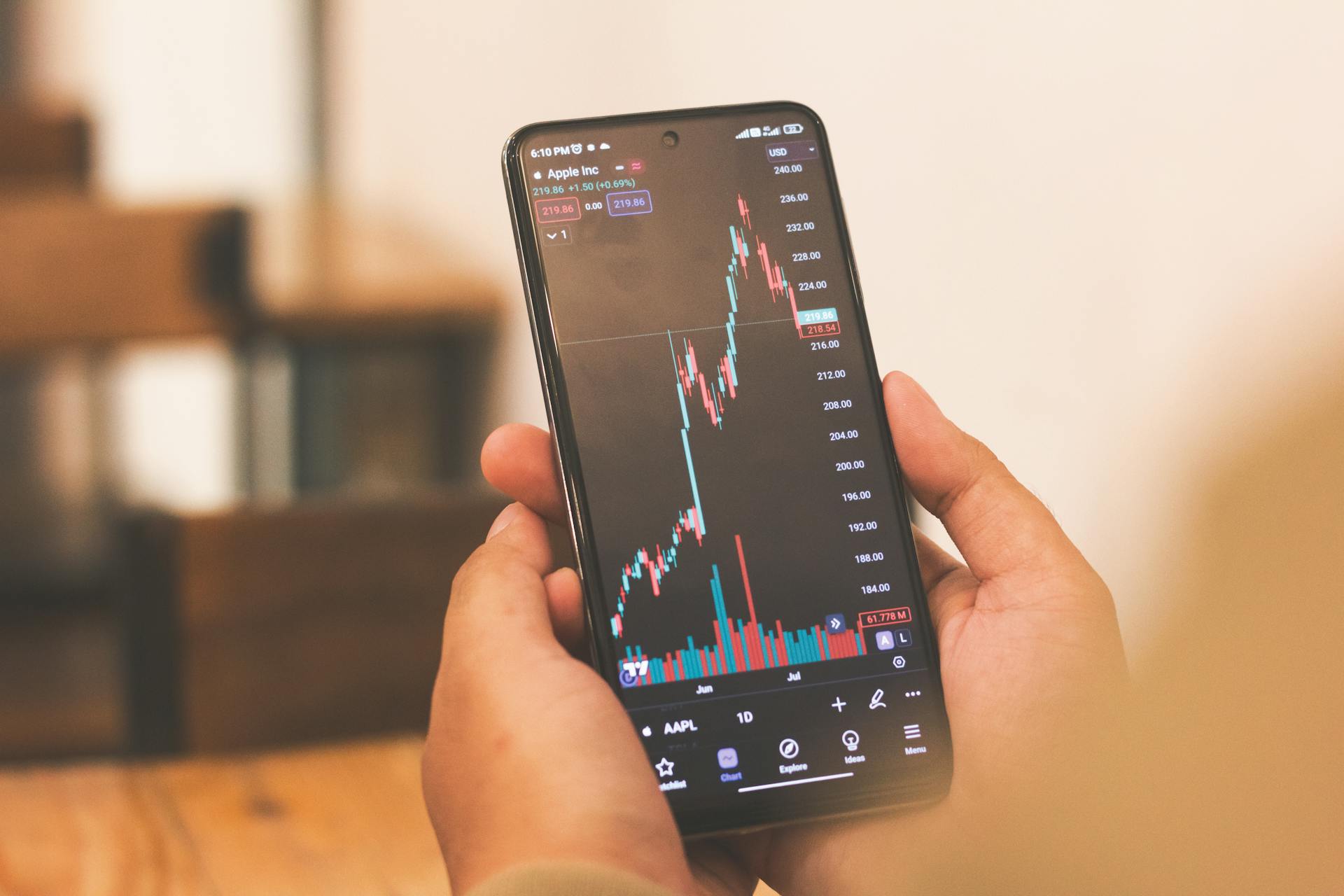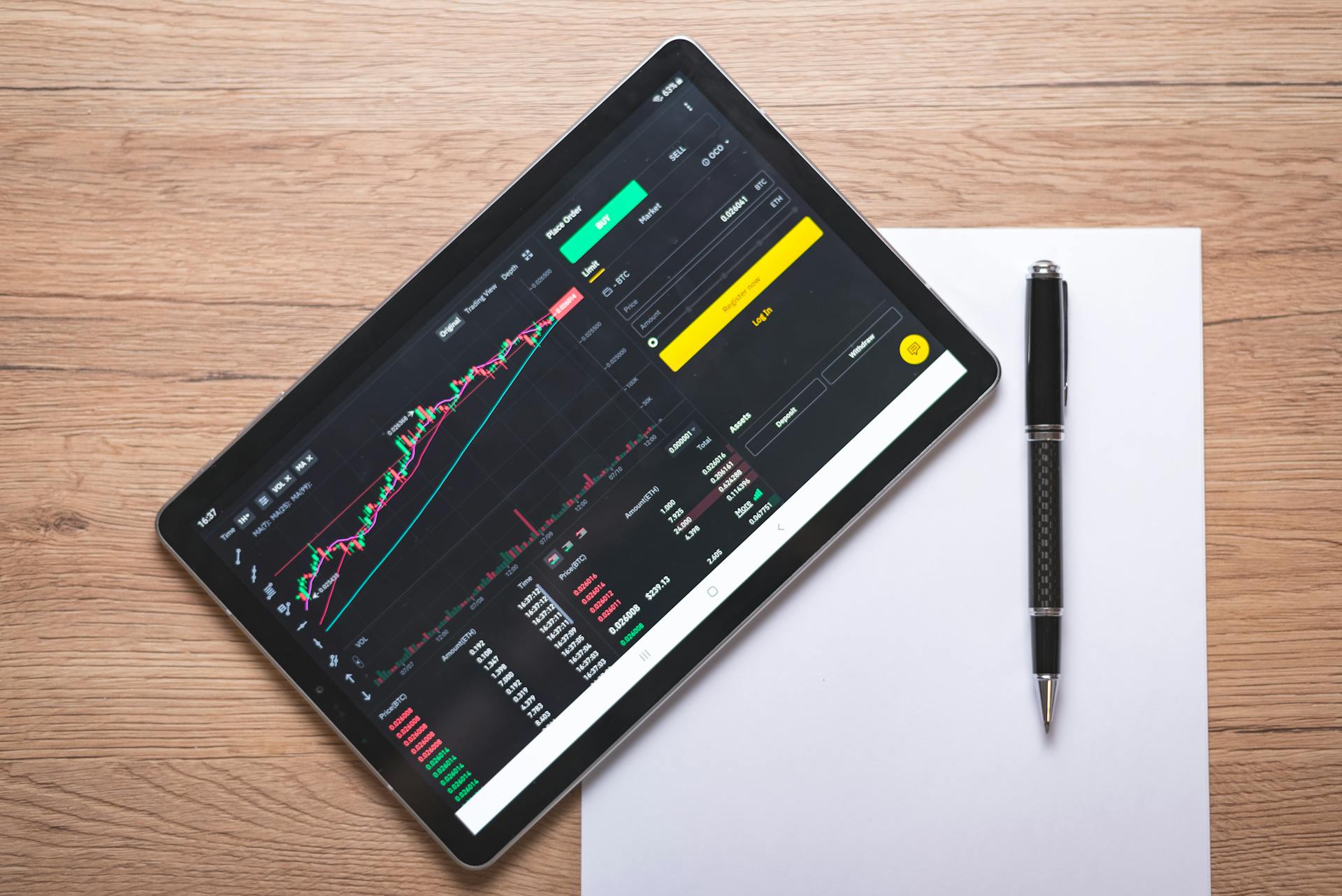
Straight preferred stock is a type of stock that offers a higher claim on assets and earnings than common stock, but typically doesn't come with voting rights.
It's often used by companies to raise capital without giving up control.
Types of Preferred Stock
Preferred stock is a unique financial instrument that offers a range of benefits to investors. Typically, preferred stockholders receive a priority claim over dividends and distribution of company assets in the event of liquidation.
There are several types of preferred stock, each with its own set of features. For example, fixed-rate preferred stock, also known as hard retractable, has a fixed coupon or dividend with a set term and par amount payable in cash at maturity.
Fixed-rate perpetual preferred stock, on the other hand, has a fixed coupon with no set term. This type of stock is often preferred by investors who want a steady income stream without the risk of a fixed term expiring.

Floating-rate preferred stock, such as floating-rate retractable, has a floating rate coupon or dividend with a set term and par amount repayable in cash at maturity. This type of stock is often preferred by investors who want to take advantage of changing interest rates.
Here are some common types of preferred stock:
- Fixed-Rate (Hard) Retractable: fixed coupon/dividend with set term with par amount payable in cash at maturity.
- Soft-Retractable: fixed coupon/dividend with set term to retraction in cash or stock at 95% of market price.
- Floating-Rate Retractable: floating rate coupon/dividend with set term and par amount repayable in cash at maturity.
- Fixed-Rate Perpetual (Straight): fixed coupon with no set term.
- Floating-Rate Perpetual: floating-rate with no set term.
- Fixed-Floater: a fixed rate coupon with change to floating rate perpetual at end of term
What Is Preferred Stock?
Preferred stock provides a priority claim on dividends and assets in case of bankruptcy, making it a more secure investment than common stock. This means that preferred stockholders get paid first when a company distributes its assets or pays out dividends.
Holders of preferred stock usually do not have voting rights, which is a key difference between them and common stockholders who typically do have a say in how the company is run.
In the event of bankruptcy, preferred stockholders have priority over common stockholders if assets are available for payout. This is a significant advantage for preferred stockholders.
Preferred stock is often convertible to common stock, giving the holder the option to exchange it for a fixed amount of common stock or a percentage of common stock outstanding on a future date.
Explore further: Preferred Stock Carries Priority over Common Stock
Preferred Stock Features

Preferred stock has some key features that set it apart from other types of investments. One of the main properties of preferred stock is that it has a priority claim over dividends and distribution of company assets.
Preferred stockholders typically don't receive dividends until the preferred stockholders have received their full dividend payment. If there is not sufficient capital to pay out all the preferred and common stockholders, preferred stockholders are paid dividends first.
The liquidation preference is another important feature of preferred stock. This specifies the order of which investors receive a return, if any, upon a liquidation event such as a merger or acquisition. Secured debtholders, creditors, or other company obligations are typically paid out first.
Here are the different types of liquidation preferences:
- Participating – also known as double-dip preferred stock, a participating liquidation preference favors the participating preferred investor.
- Non-Participating – also known as straight preferred, the preferred stock investor receives their liquidation preference at the set multiple, but does not receive a share of the remaining proceeds.
- Capped Participating – often seen as an intermediate option, the preferred stock investor receives the liquidation preference and a pro-rata share of the remaining proceeds until total proceeds reach a pre-determined multiple of the original investment amount.
Preferred stockholders are subordinate to debt and trade creditors, which means they have a lower claim on company assets in the event of bankruptcy or liquidation.
Investing in Preferred Stock

Preferred stock is a type of equity that offers a higher claim on assets and dividends than common stock.
Investors often prefer preferred stock because it typically has a higher credit rating than bonds and provides a regular income stream.
Dividends on preferred stock are usually fixed and paid quarterly or annually, providing a predictable return on investment.
Preferred stockholders also have priority over common stockholders in the event of liquidation, meaning they'll receive their investment back before common stockholders.
This makes preferred stock a relatively safe investment option for those seeking income and capital preservation.
Private Market Stocks
Preferred stock is a financial instrument used to help raise funds in the private market.
Typically, preferred stockholders receive a priority claim over dividends and distribution of company assets in the event of liquidation. Some investors may favor this priority claim, which can be a significant advantage in the private market.
Private equity companies can use this priority claim to help attract investors, which is a key benefit of preferred stock.
Governments Should Invest in Their Banks

Governments should invest in their banks by buying straight preferred stock. This adds capital and liquidity immediately to give banks the room to manage their asset quality and liquidity problems.
The G7 governments should follow the UK's plan, which involves two parts. The first part is sharing the burden of standing behind interbank borrowing in the LIBOR market for a brief time.
The second part of the plan is government purchases of straight preferred stock. This is also copied from the UK plan and is crucial to its success.
The details of how the preferred stock is designed are crucial to its success. Taxpayers should not be in a first-loss position, so there is no need to add upside warrants or other options.
Coupons on the preferred should be set very low for the first two or three years, and then the coupon should jump to market rates subsequently. This will provide an immediate limited up front subsidy that will help to recapitalize banks.
The preferred shares should be callable so that banks can exit the arrangement as soon as they are back on their feet.
Intriguing read: Restricted Stock Plan
Preferred Stock vs. Debt

Preferred stock is a hybrid security that combines elements of debt and equity, but it's often misunderstood as a debt instrument.
Preferred stockholders have a higher claim on assets and earnings than common stockholders, but they generally don't have voting rights.
In exchange for their investment, preferred stockholders receive a fixed dividend payment, usually quarterly or annually.
Preferred stock is typically considered a lower-risk investment than common stock, as it has a higher claim on assets and earnings.
However, unlike debt, preferred stockholders don't have a direct claim on the company's assets in the event of bankruptcy.
The dividend payments on preferred stock are usually cumulative, meaning that if a company misses a payment, the missed payment must be made before any further payments can be made.
Preferred stockholders also have a higher claim on assets in the event of liquidation, but this is typically only relevant in extreme circumstances.
Explore further: Clf Earnings
Frequently Asked Questions
What is the difference between straight and cumulative preferred stock?
Preferred stock can be either cumulative or straight, with the main difference being that cumulative stock requires missed dividends to be made up, while straight stock does not
What is the key difference between straight preferred stock and participating preferred stock shares?
The key difference between straight preferred stock and participating preferred stock is that participating preferred stock shares receive a portion of the company's profits, while straight preferred stock does not. This distinction affects how shareholders are rewarded for their investment, making participating preferred stock a more attractive option for some investors.
What is the downside of preferred stock?
Preferred stock has two main downsides: it ranks lower than bonds in the event of bankruptcy, and it can be illiquid, making it difficult to sell quickly.
Sources
- https://app.achievable.me/study/finra-series-7/learn/preferred-stock-features-cumulative-vs-straight
- https://cepr.org/voxeu/columns/governments-should-buy-straight-preferred-stock-their-banks-0
- https://www.financialpipeline.com/types-of-preferred-shares/
- https://microventures.com/preferred-stock-private-market
- https://papers.ssrn.com/sol3/papers.cfm
Featured Images: pexels.com


